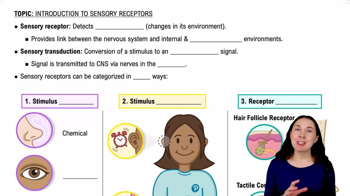Here are the essential concepts you must grasp in order to answer the question correctly.
Strychnine Mechanism of Action
Strychnine is a potent neurotoxin that primarily acts as a competitive antagonist at glycine receptors in the central nervous system. By blocking these receptors, strychnine disrupts the inhibitory neurotransmission that glycine normally mediates, leading to increased neuronal excitability. This results in symptoms such as muscle spasms and rigidity, as seen in Jan's case, where the lack of inhibition causes excessive muscle contraction.
Recommended video:
Glycine Receptors
Glycine receptors are ligand-gated ion channels that mediate inhibitory neurotransmission in the spinal cord and brainstem. When glycine binds to these receptors, it typically allows chloride ions to enter the neuron, leading to hyperpolarization and reduced neuronal firing. Inhibition of these receptors by substances like strychnine can lead to a loss of this inhibitory effect, resulting in hyperreflexia and increased muscle tone, contributing to the clinical symptoms observed.
Recommended video:
Hyperreflexia and Muscle Tone
Hyperreflexia refers to an exaggerated response to stimuli, often resulting from an imbalance between excitatory and inhibitory signals in the nervous system. In Jan's case, the blockade of glycine receptors by strychnine leads to a predominance of excitatory signals, causing increased muscle tone and spasms. This clinical presentation is characterized by stiffness and involuntary muscle contractions, which are hallmark signs of strychnine poisoning.
Recommended video:
Introduction to Muscles and Muscle Tissue Example 1
 Elaine N. Marieb, Katja Hoehn 7th Edition
Elaine N. Marieb, Katja Hoehn 7th Edition Ch. 14 The Autonomic Nervous System
Ch. 14 The Autonomic Nervous System Problem 26
Problem 26 Verified step by step guidance
Verified step by step guidance


